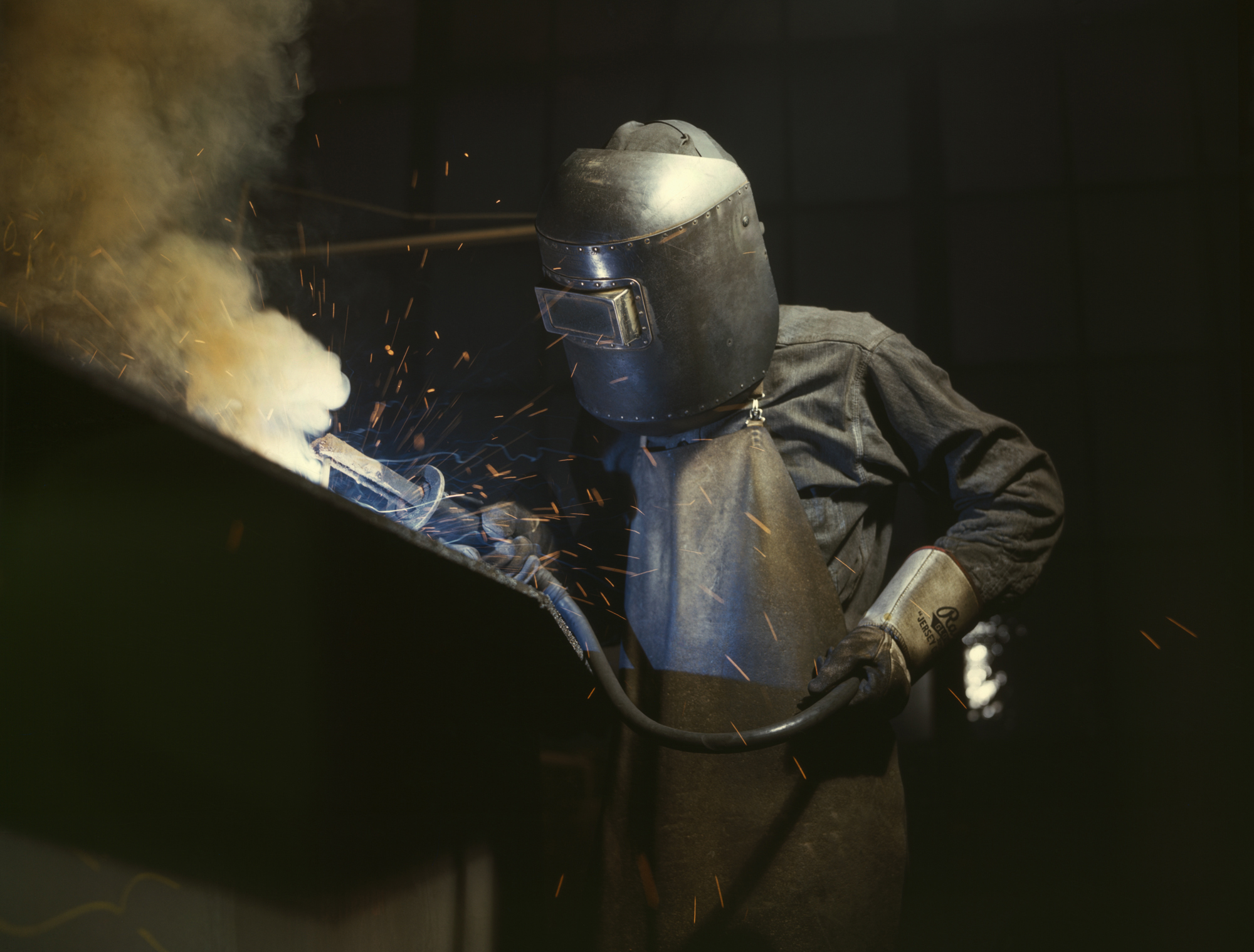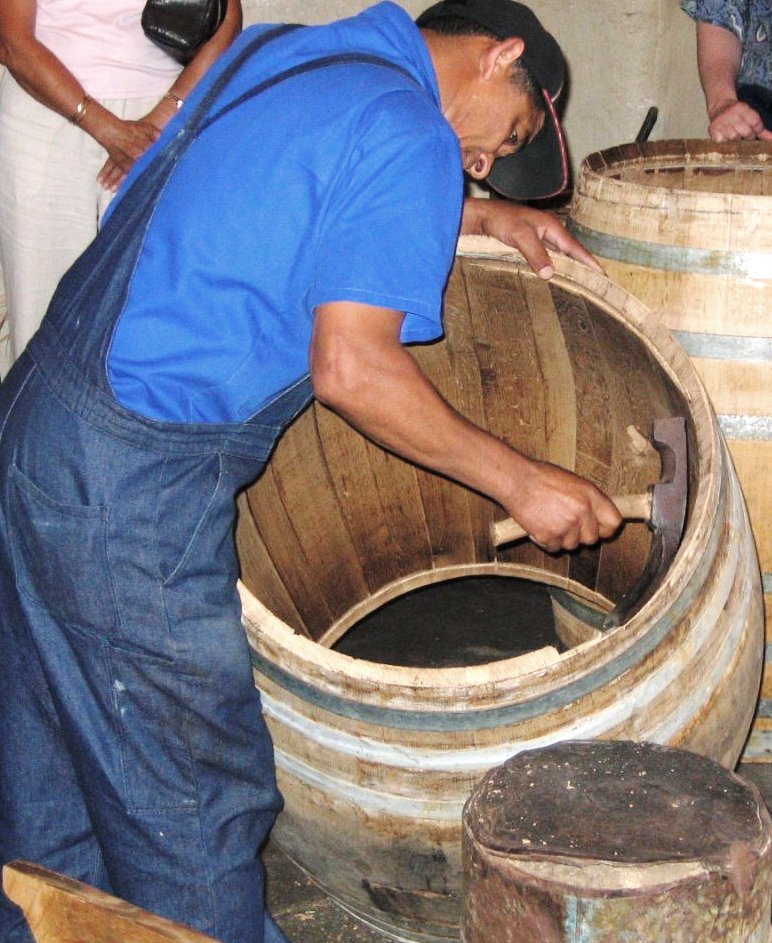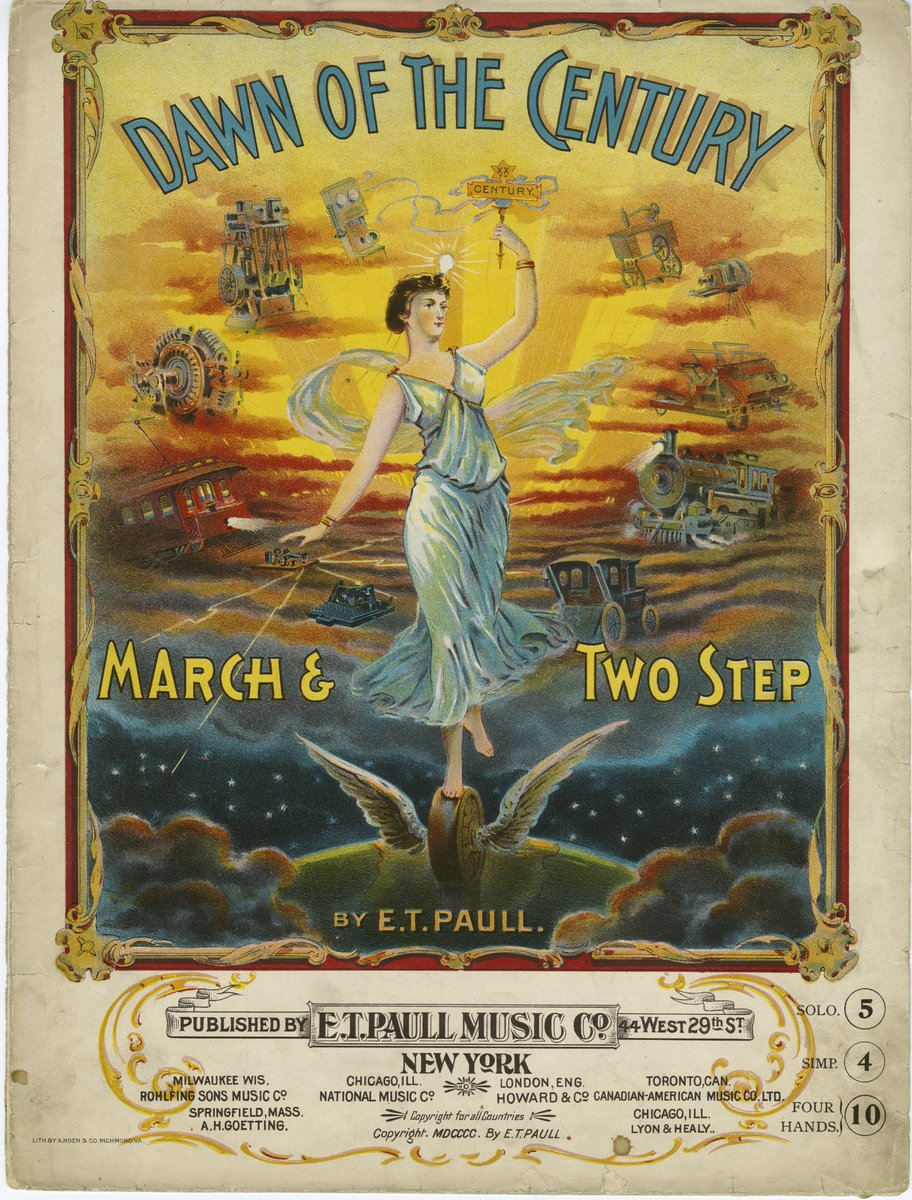|
Tradesman
A tradesperson or tradesman/tradeswoman is a skilled worker that specialises in a particular trade. Tradespeople (tradesmen/women) usually gain their skills through work experience, on-the-job training, an apprenticeship program or formal education. As opposed to a master craftsman or an artisan, a tradesperson (tradesman/tradeswoman) is not necessarily restricted to manual work. History In Victorian England, The terms "skilled worker," "craftsman," "artisan," and "tradesman" were used in senses that overlap. All describe people with specialized training in the skills needed for a particular kind of work. Some of them produced goods that they sold from their own premises (e.g. bootmakers, saddlers, hatmakers, jewelers, glassblowers); others (e.g. typesetters, bookbinders, wheelwrights) were employed to do one part of the production in a business that required a variety of skilled workers. Still others were factory hands who had become experts in some complex part of th ... [...More Info...] [...Related Items...] OR: [Wikipedia] [Google] [Baidu] |
Plumber
A plumber is a tradesperson who specializes in installing and maintaining systems used for potable (drinking) water, hot-water production, sewage and drainage in plumbing systems.Employment and Occupations in the Skilled Trades in Michigan , Michigan Department of Technology, Management, and Budget, Bureau of Labor Market Information and Strategic Initiatives (June 2013). History The origin of the word "plumber" dates from the . Roman roofs used lead in conduits and drain pipes and some were also covered with lead; lead was also used for[...More Info...] [...Related Items...] OR: [Wikipedia] [Google] [Baidu] |
Apprenticeship
Apprenticeship is a system for training a potential new practitioners of a trade or profession with on-the-job training and often some accompanying study. Apprenticeships may also enable practitioners to gain a license to practice in a regulated occupation. Most of their training is done while working for an employer who helps the apprentices learn their trade or profession, in exchange for their continued labor for an agreed period after they have achieved measurable competencies. Apprenticeship lengths vary significantly across sectors, professions, roles and cultures. In some cases, people who successfully complete an apprenticeship can reach the " journeyman" or professional certification level of competence. In other cases, they can be offered a permanent job at the company that provided the placement. Although the formal boundaries and terminology of the apprentice/journeyman/master system often do not extend outside guilds and trade unions, the concept of on-the-job trai ... [...More Info...] [...Related Items...] OR: [Wikipedia] [Google] [Baidu] |
Master Craftsman
Historically, a master craftsman or master tradesman (sometimes called only master or grandmaster) was a member of a guild. The title survives as the highest professional qualification in craft industries. In the European guild#organization, guild system, only masters and journeymen were allowed to be members of the guild. An aspiring master would have to pass through the career chain from apprentice to journeyman before he could be elected to become a master craftsman. He would then have to produce a sum of money and a masterpiece before he could actually join the guild. If the masterpiece was not accepted by the masters, he was not allowed to join the guild and possibly remained a journeyman for the rest of his life. Today's master craftsman in different countries Germany In Germany, the master craftsman (''Meister'') is the highest professional qualification in crafts and is a state-approved grade. The certification is called ''Meisterbrief''. The qualification inclu ... [...More Info...] [...Related Items...] OR: [Wikipedia] [Google] [Baidu] |
Welder
A welder is a person or equipment that fuses materials together. The term welder refers to the operator, the machine is referred to as the welding power supply. The materials to be joined can be metals (such as steel, aluminum, brass, stainless steel etc.) or varieties of plastic or polymer. Welders typically have to have good dexterity and attention to detail, as well as technical knowledge about the materials being joined and best practices in the field. Safety issues Welding, without the proper precautions appropriate for the process, can be a dangerous and unhealthy practice. However, with the use of new technology and proper protection, the risks of injury and death associated with welding can be greatly reduced. Because many common welding procedures involve an open electric arc or a flame, the risk of burns is significant. To prevent them, welders wear personal protective equipment in the form of heavy leather gloves and protective long sleeve jackets to avoid exposure t ... [...More Info...] [...Related Items...] OR: [Wikipedia] [Google] [Baidu] |
Glassblower
Glassblowing is a glassforming technique that involves inflating molten glass into a bubble (or parison) with the aid of a Blowpipe (tool), blowpipe (or blow tube). A person who blows glass is called a ''glassblower'', ''glassmith'', or ''gaffer''. A ''lampworking, lampworker'' (often also called a glassblower or glassworker) manipulates glass with the use of a torch on a smaller scale, such as in producing precision laboratory glassware out of borosilicate glass. Technology Principles As a novel glass forming technique created in the middle of the 1st century BC, glassblowing exploited a working property of glass that was previously unknown to glassworkers; inflation, which is the expansion of a molten blob of glass by introducing a small amount of air into it. That is based on the liquid structure of glass where the atoms are held together by strong chemical bonds in a disordered and random network,Frank, S 1982. Glass and Archaeology. Academic Press: London. Freestone, I. (19 ... [...More Info...] [...Related Items...] OR: [Wikipedia] [Google] [Baidu] |
Cooper (profession)
A cooper is a craftsman who produces wooden casks, barrels, vats, buckets, tubs, troughs, and other similar containers from timber staves that were usually heated or steamed to make them pliable. Journeymen coopers also traditionally made wooden implements, such as rakes and wooden-bladed shovels. In addition to wood, other materials, such as iron, were used in the manufacturing process. The trade is the origin of the surname Cooper. Etymology The word "cooper" is derived from Middle Dutch or Middle Low German ''kūper'' 'cooper' from ''kūpe'' 'cask', in turn from Latin ''cupa'' 'tun, barrel'. The word was adopted in England as an occupational surname, Cooper. The art and skill of ''coopering'' refers to the manufacture of wooden casks, or barrels. The facility in which casks are made is referred to as a cooperage. History Traditionally, a cooper is someone who makes wooden, staved vessels, held together with wooden or metal hoops and possessing flat ends or he ... [...More Info...] [...Related Items...] OR: [Wikipedia] [Google] [Baidu] |
Sail-maker
A sailmaker makes and repairs sails for sailboats, kites, hang gliders, wind art, architectural sails, or other structures using sails. A sailmaker typically works on shore in a sail loft; the sail loft has other sailmakers. Large ocean-going sailing ships often had sailmakers in the crew, maintaining and repairing sails. This required knowledge of the sailmaker's craft and the tools of the sailmakers loft on shore. Today, one of a sailmaker's important jobs is to teach people how to set and trim their sails to get the most out of them. Sometimes a sailmaker will accompany the client out on the water and adjust the sails. The modern sailmaker uses computer-aided Computer-aided design, design and Computer-aided manufacturing, manufacturing tools. Computer graphics allow the sailmaker to produce a "lines drawing" of the sail. Once the design is complete, the sailmaker can now use a low-power laser to cut the material to the exact shape. Broadseam CFD Sailmakers have recently s ... [...More Info...] [...Related Items...] OR: [Wikipedia] [Google] [Baidu] |
Industrial Revolution
The Industrial Revolution, sometimes divided into the First Industrial Revolution and Second Industrial Revolution, was a transitional period of the global economy toward more widespread, efficient and stable manufacturing processes, succeeding the Second Agricultural Revolution. Beginning in Kingdom of Great Britain, Great Britain around 1760, the Industrial Revolution had spread to continental Europe and the United States by about 1840. This transition included going from craft production, hand production methods to machines; new Chemical industry, chemical manufacturing and Puddling (metallurgy), iron production processes; the increasing use of Hydropower, water power and Steam engine, steam power; the development of machine tools; and rise of the mechanisation, mechanised factory system. Output greatly increased, and the result was an unprecedented rise in population and population growth. The textile industry was the first to use modern production methods, and textiles b ... [...More Info...] [...Related Items...] OR: [Wikipedia] [Google] [Baidu] |
Handicraft
A handicraft is a traditional main sector of craft making and applies to a wide range of creative and design activities that are related to making things with one's hands and skill, including work with textiles, moldable and rigid materials, paper, plant fibers, clay, etc. One of the oldest handicraft is Dhokra; this is a sort of metal casting that has been used in India for over 5,000 years and is still used. In Sistan and Baluchestan Province, Iranian Baluchistan, women still make red ware hand-made pottery with dotted ornaments, much similar to the 4,000-year-old pottery tradition of Kalpurgan, an archaeological site near the village. Usually, the term is applied to traditional techniques of creating items (whether for personal use or as products) that are both practical and aesthetic. Handicraft industries are those that produce things with hands to meet the needs of the people in their locality without using machines. Collective terms for handicrafts include artisanry, ... [...More Info...] [...Related Items...] OR: [Wikipedia] [Google] [Baidu] |
Erik Olssen
Erik Newland Olssen (born 14 December 1941) is a New Zealand historian whose research focuses on the linkages between social structures, politics, and the world of ideas at four spatial domainsthe local, provincial, national and global. His early research examined labour history, especially the working-class mobilisation in New Zealand from 1880 to 1940 and included a study of Caversham, regarded as one of the most industrialised areas of New Zealand at that time. He has published several articles and monographs, including a biography of John A. Lee, and a history of Otago. Olssen was an academic in the Department of History at the University of Otago from 1969 until his retirement in 2002, when he was conferred with the title of emeritus professor. Early life, education and career Olssen was born in Hamilton on 14 December 1941. He was educated at King's High School in Dunedin from 1955 to 1960, being inducted into the school's Hall of Fame in 2021. In 1964 Olssen gradua ... [...More Info...] [...Related Items...] OR: [Wikipedia] [Google] [Baidu] |
Turn Of The Century
The turn of the century is the transition from one century to another, or the time period before or after that change in centuries. Usage The phrase "turn of the century" is generally understood to mean the change (whether upcoming or past) closest to the current generation. During the 20th century, the phrase, unqualified, was used to refer to the transition from the 19th century to the 20th century. In the 21st century, "turn of the 21st century" (or 20th century) may be used to avoid ambiguity. The ''Chicago Manual of Style'' has indicated some ambiguity on the exact meaning of the phrase "turn of the ''n''-th century". For instance, if a statement describes an event as taking place "at the turn of the 18th century", it could refer to a period around the year 1701 or around 1800, that is, the beginning or end of that century. Consequently they recommend only using "turn of the century", in a context that makes clear which transition is meant, otherwise using different, unambi ... [...More Info...] [...Related Items...] OR: [Wikipedia] [Google] [Baidu] |
Caversham, New Zealand
Caversham is one of the older suburbs (neighbourhoods) of the city of Dunedin, in New Zealand's South Island. It is sited at the western edge of the city's central plain at the mouth of the steep Caversham Valley, which rises to the saddle (landform), saddle of Lookout Point. Major road and rail routes south lie nearby; the South Island Main Trunk railway runs through the suburb, and a bypass (road), bypass skirts its main retail area, connecting Dunedin's one-way street system with the Dunedin Southern Motorway. The suburb is linked by several bus routes to its neighbouring suburbs and central Dunedin. The suburb was founded by wealthy pioneer William Henry Valpy, and its name reflects his family connections with the town of Reading, Berkshire, Reading, in the England, English county of Berkshire. Caversham grew rapidly during the Otago gold rush of the 1860s because of its location on routes south to the Otago hinterland. By the end of the 19th century, Caversham was heavily ... [...More Info...] [...Related Items...] OR: [Wikipedia] [Google] [Baidu] |










